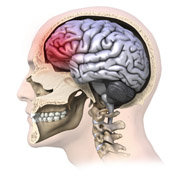Brain, Biology and Behavior, Center for
Date of this Version
2020
Document Type
Article
Citation
BRAIN CONNECTIVITY Volume 10, Number 5, 2020, Inc. DOI: 10.1089/brain.2019.0728
Abstract
During the early period of reading development, children gain phonological (letter-to-sound mapping) and semantic knowledge (storage and retrieval of word meaning). Their reading ability changes rapidly, accompanied by learning-induced brain plasticity as they learn to read. This study aims at identifying the neural bases of phonological and semantic processing in early childhood by using a combination of univariate and multivariate pattern analysis. Nineteen typically developing children between the age of five and seven performed visual word-level phonological (rhyming) and semantic (related meaning) judgment tasks during functional magnetic resonance imaging scans. Our multivariate analysis showed that young children with good reading ability have already recruited the left hemispheric regions in the brain for phonological processing, including the inferior frontal gyrus (IFG), superior and middle temporal gyrus, and fusiform gyrus. In addition, our multivariate results suggested that different sub-regions of the left IFG were recruited for the two tasks. Our results suggested the left lateralization of frontotemporal regions for phonological processing and semantic processing. In addition, we observed bilateral activations of parietal regions for semantic processing during early childhood. Our findings indicate that the neural bases of reading have already begun to be shaped in early childhood for typically developing children, which can be used as a control baseline for comparison of children at risk for reading difficulties.
Included in
Behavior and Behavior Mechanisms Commons, Nervous System Commons, Other Analytical, Diagnostic and Therapeutic Techniques and Equipment Commons, Other Neuroscience and Neurobiology Commons, Other Psychiatry and Psychology Commons, Rehabilitation and Therapy Commons, Sports Sciences Commons


Comments
© Mary Ann Liebert